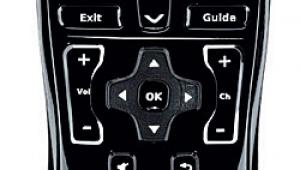Hello there. Top-notch performance sets Razer products apart and is why many gamers around the world prefer their devices. The company provides a large selection of products to its customers, and everyone, taking into account their needs and preferences, will be able to choose the best option for themselves. And if someone needs advice on the product they are purchasing, they can always contact razer customer service whose experienced employees can easily answer all questions that users may have.
Remote Possibilities
If you've got as much gear as the average home theater writer, you can relate to the panicky feeling you get when you go to the kitchen for a beer and some snacky cakes, come back, and find that two of your remotes have shacked up to make a third . . . and a fourth . . . and a fifth—to the point where your collection of expensive coffee-table books is hidden under a pile of black, rectangular gadgets. That's a scary feeling—some of us have even gone into therapy because of it. Don't worry, you're not hallucinating, but you do have a problem. You need to simplify. With all the remote possibilities out there, the possibility that you'll find one that will jibe with your system and your needs isn't remote at all. You just need to figure out what sort of remote is best for you. And since we're, well, sort of control freaks (as the expression goes), we can help you figure out if you want a universal remote, a learning remote, a programmable touchscreen remote, or some combination thereof.
 Before we begin to describe the various types of remotes, however, we should go over a few general rules. For one, the more devices the remote can control, usually, the more expensive it will be. You'll want to consider the number of devices the universal remote controls versus the price. A remote can control as few as three devices and as many as 10 or 12. (The number of devices it controls correlates to the number of remotes you'll get rid of.)
Before we begin to describe the various types of remotes, however, we should go over a few general rules. For one, the more devices the remote can control, usually, the more expensive it will be. You'll want to consider the number of devices the universal remote controls versus the price. A remote can control as few as three devices and as many as 10 or 12. (The number of devices it controls correlates to the number of remotes you'll get rid of.)
When purchasing a remote, you'll also want to consider whether or not it has backlighting (or, at least, glow-in-the-dark buttons), which, of course, comes in handy when you're viewing in dimly lit scenarios (i.e., when you've got a babe in the house). Another handy feature in a remote's design is an LED display that indicates which device you're controlling, whether it's your DVD player, laserdisc player, TV, etc. This helps to eliminate accidentally controlling sources you're not even using. Remotes can have global commands like volume up/down or channel up/down that allow you to access the sound system's volume or the cable box's channel changer, regardless of whether the remote is controlling the TV, DVD player, or VCR. Some remotes actually give audio feedback to confirm that a command has been executed, which is a nice bonus. Say, for example, you're trying to execute a power command—if the remote doesn't beep to indicate that the power button has been pushed, you might push it again, thus reversing the desired effect ("on" is now "off").
Most remotes use infrared light to send commands, which means you must have a direct line of sight from your remote to your gear, and you must be within a certain range. You have to point the remote control right at the device's IR receiver in order for it to receive the IR command. This can be annoying, especially if you want your gear to stay hidden behind a cabinet or in another room. You can purchase devices, such as IR receivers and emitters (from companies like Niles and Xantech), that provide a single, small, external IR receiver that you can place at some accessible point so that your remotes will work, even when your gear is out of sight. The external receiver accepts the IR codes and then transmits them through wired emitters, which then flash the IR code in front of the individual piece of equipment. One way or another, though, you have to point the remote at something.
 Another option is to use an RF, or radio-frequency, remote. These controllers (like touchpanel models from Crestron, AMX, and Lexicon or the remotes used with DSS systems) can be operated through walls or cabinets and usually have a much greater range than IR remotes. The remote commands are sent via radio frequencies to a small RF receiver that's placed near your equipment. The receiver then converts the RF commands into the appropriate IR commands, which are transmitted through the same type of emitter system described above. Since the RF signal can go through nearly any substance, you don't have to worry about where you point it—which can, at times, be a bit of a disadvantage. Because the RF signal travels through most materials and in all directions, if you accidentally hit a button, that command will find your gear and perform its duty, whether you want it to or not. This is not a huge concern, but it is something to consider.
Another option is to use an RF, or radio-frequency, remote. These controllers (like touchpanel models from Crestron, AMX, and Lexicon or the remotes used with DSS systems) can be operated through walls or cabinets and usually have a much greater range than IR remotes. The remote commands are sent via radio frequencies to a small RF receiver that's placed near your equipment. The receiver then converts the RF commands into the appropriate IR commands, which are transmitted through the same type of emitter system described above. Since the RF signal can go through nearly any substance, you don't have to worry about where you point it—which can, at times, be a bit of a disadvantage. Because the RF signal travels through most materials and in all directions, if you accidentally hit a button, that command will find your gear and perform its duty, whether you want it to or not. This is not a huge concern, but it is something to consider.
- Log in or register to post comments































































